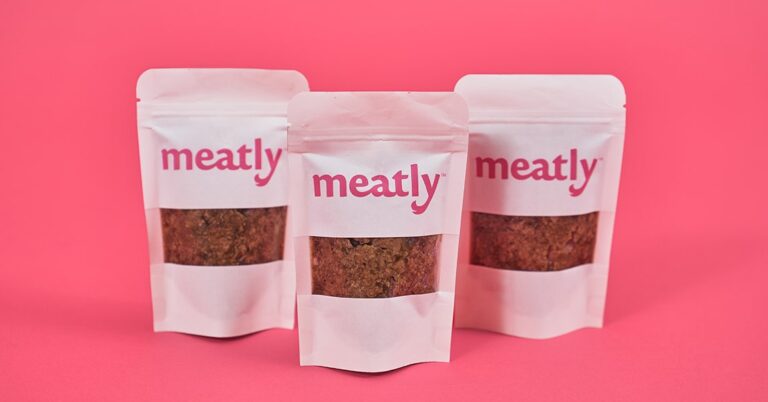In his west London lab, Helder Kruse reaches into the fridge and pulls out a small plastic container containing 280 grams of an off-white paste with the consistency of putty: actual chicken cells, harvested from fertilized eggs and painstakingly grown in a bioreactor opposite.
The paste doesn’t look particularly appetizing, but I’m not its target demographic. The cells are for no-slaughter pet food, and the company that grows them, Meatly, has just been approved by UK regulators to produce chicken cells for pet food — the first lab-grown pet food ingredient in the world to be approved.
The approval was granted by the Animal and Plant Health Authority (APHA) on July 2. In the UK, cultured animal cells intended for use in pet food are classified as animal by-products. The approval allows Meatly to sell the chicken cells as an ingredient to licensed pet food manufacturers.
“We’ve been actively engaged in discussions with regulators and want to be transparent and include everyone in this effort,” said Meatly CEO Owen Ensor. Ensor said the company has already shipped some of the chicken cells to pet food manufacturers so they can run their own nutritional tests and try different pet food formulations using Meatly’s cells as an ingredient.
Ensor says the first pet food containing Meatly cells will be a dog food and could be on UK shelves by the end of the year, but that a product launch is not a big priority for the company at the moment. “We need to reduce costs and gain scale,” he says. “That said, a product launch would be useful and we’d get feedback from customers.”
The overall cultured meat industry is still a tiny fraction of the trillion-dollar meat industry, and cultured pet food is a niche within a niche that presents some unique challenges. Growing animal cells in bioreactors is still extremely expensive because it requires a finely balanced mix of proteins and nutrients the cells need to grow. And because meat used for pet food is much cheaper than human meat, the cost of cultured meat would need to come down dramatically before it becomes a viable alternative to pet food.
Meatly is trying several ways to cut costs. Chief Scientific Officer Helder Kruse says that because most commercial dog foods are already mixed with real meat and lots of cheap bulking ingredients, the final product could consist of just 4 to 5 percent animal cells mixed with grains and other plant-based ingredients. The company is also trying to reduce production costs by replacing some of the expensive proteins in the liquid in which the cells are cultured with small molecules from cheaper ingredients.
The cells used in Meatly’s chicken patties are derived from commercially available cells taken from fertilized chicken eggs. The cells are spontaneously immortalized, meaning they have the ability to replicate indefinitely, unlike non-immortalized cells, which replicate a certain number of times and then stop growing.
“One of our philosophies is to be very focused and work very quickly,” Ensor says. That means starting with off-the-shelf cell lines to simplify production and focusing primarily on chicken, rather than trying different species. “The less we have to do, the more progress we can make toward that goal.”
There are several companies trying to make cultured pet food. Biocraft Pet Nutrition, an Austrian company, produces cultured pet food. Rat meatMeanwhile, Czech companies Benemit Technologies The company has produced some samples of cultured meat for pet food, but the funding these startups have raised is tiny compared to the companies aiming to commercialize cultured meat for humans.
“What’s most impressive is that Meatly not only received its first approval, but it was approved in just two years for £3.5 million. [$4.55 million]”In investing, we’ve always wanted to try new things,” says Anthony Chou, co-founder of Agronomics, an early investor in Meatly.
Mr Ensor said the finished ingredient currently costs “double digit” pounds per kilo, but that’s before it’s mixed with other pet food ingredients. “The price is still high, so it will become a premium item,” he said.



